Python List All Files In Directory
1. Using the os Module:
The os module in Python provides several functions for interacting with the operating system. To list all files in a directory, we can use the os.listdir() function. This function returns a list that contains the names of all files and folders in the specified directory. Here is an example:
“`python
import os
directory = ‘/path/to/directory’
files = os.listdir(directory)
for file in files:
print(file)
“`
2. Employing the pathlib Module:
The pathlib module was introduced in Python 3.4 and provides an object-oriented approach for working with files and directories. To list all files in a directory using this module, we can use the iterdir() method of the Path object. Here is an example:
“`python
from pathlib import Path
directory = Path(‘/path/to/directory’)
for file in directory.iterdir():
print(file.name)
“`
3. Utilizing the glob Module:
The glob module allows us to perform pattern matching on file and directory names. To list all files in a directory using this module, we can use the glob() function with the pattern ‘*’ to match all files. Here is an example:
“`python
import glob
directory = ‘/path/to/directory/*.txt’
files = glob.glob(directory)
for file in files:
print(file)
“`
4. Applying the scandir() Function:
The scandir() function is another method provided by the os module to efficiently list files in a directory. This function returns an iterator of DirEntry objects that represent files and directories within the specified directory. Here is an example:
“`python
import os
directory = ‘/path/to/directory’
with os.scandir(directory) as entries:
for entry in entries:
if entry.is_file():
print(entry.name)
“`
5. Using the readdir() Function:
Similar to scandir(), the readdir() function is another way to list files in a directory. This function is available in the built-in os module and returns a list of all files and folders present in the given directory. Here is an example:
“`python
import os
directory = ‘/path/to/directory’
files = os.listdir(directory)
for file in files:
if os.path.isfile(os.path.join(directory, file)):
print(file)
“`
6. Employing the walk() Function:
The walk() function from the os module allows us to recursively traverse a directory’s structure and list all files and directories. It returns a generator that yields a tuple containing the directory path, a list of subdirectories, and a list of filenames in that directory. Here is an example:
“`python
import os
directory = ‘/path/to/directory’
for subdir, dirs, files in os.walk(directory):
for file in files:
print(os.path.join(subdir, file))
“`
Now, let’s cover some frequently asked questions related to listing files in a directory:
FAQs:
Q1. How can I read all files in a folder using Python?
A1. To read all files in a folder using Python, you can utilize any of the methods mentioned above, such as using the os module, the pathlib module, or the glob module.
Q2. How can I list all files in a directory and its subdirectories in Python?
A2. To list all files in a directory and its subdirectories, you can use the walk() function from the os module. This function recursively traverses the directory structure and lists all files and directories.
Q3. How can I list all files in a folder using the command prompt (cmd)?
A3. To list all files in a folder using the command prompt, you can navigate to the desired directory and execute the “dir” command. This will display all files and directories in that location.
Q4. How can I list only specific file types in a directory using Python?
A4. To list only specific file types in a directory, you can utilize the glob module. By specifying a pattern with a specific file extension, you can filter the files based on that extension.
Q5. How can I get all files in a folder using Java and C#?
A5. In Java, you can use the java.nio.file package to obtain all files in a folder. In C#, you can use the System.IO.Directory class and its methods, such as GetFiles(), to list all files in a folder.
Q6. How can I get all folders in a directory using Python?
A6. To get all folders in a directory using Python, you can use the walk() function from the os module. By looping over the returned generator, you can retrieve all subdirectories present in the specified directory.
In conclusion, Python provides various methods to list all files in a directory, including options like the os module, the pathlib module, the glob module, the scandir() function, the readdir() function, and the walk() function. Aside from listing files, we have also explored different aspects related to reading all files in a folder, listing files in a directory and its subdirectories, listing files in a folder using the command prompt, listing files with specific extensions, obtaining files in a folder using Java and C#, and retrieving folders in a directory using Python. These methods provide developers with flexibility and efficiency for file handling tasks in their Python projects.
Python | List Files In A Directory
Keywords searched by users: python list all files in directory Read all file in folder Python, Python list all files in directory and subdirectories, List all file in folder cmd, Python list files in directory with extension, Get all file in folder Java, Get all file in folder C#, Get all folder in directory Python, os.walk python
Categories: Top 29 Python List All Files In Directory
See more here: nhanvietluanvan.com
Read All File In Folder Python
Python is a powerful programming language that offers numerous libraries and functions to facilitate various tasks, including file manipulation. When working with files, it is often necessary to read the contents of multiple files located within a folder. In this article, we will explore different methods to achieve this in Python, along with sample code snippets.
Methods to Read All Files in a Folder
Python provides several methods to read all the files in a folder. Let’s discuss some of the commonly used methods below:
1. Using the os module:
The os module in Python offers various functions to interact with the operating system. To read all the files in a folder using this module, we can iterate through each file in the directory using the `os.listdir()` function. Here’s an example:
“`python
import os
folder_path = “/path/to/folder”
for file_name in os.listdir(folder_path):
file_path = os.path.join(folder_path, file_name)
with open(file_path, ‘r’) as file:
content = file.read()
# Process the file content here
“`
2. Utilizing the glob module:
The glob module provides a convenient way to retrieve file names that match a specified pattern. We can use this module to get a list of all the files in a folder and then read their contents. Consider the code snippet below:
“`python
import glob
folder_path = “/path/to/folder”
file_paths = glob.glob(f”{folder_path}/*”)
for file_path in file_paths:
with open(file_path, ‘r’) as file:
content = file.read()
# Process the file content here
“`
3. Leveraging the Path object from the pathlib module:
The pathlib module introduced in Python 3 provides an object-oriented approach to file system paths. We can use the `Path.glob()` method to retrieve the file paths within a folder and iterate through them to read the file contents. Here’s an example:
“`python
from pathlib import Path
folder_path = Path(“/path/to/folder”)
for file_path in folder_path.glob(‘*’):
with open(file_path, ‘r’) as file:
content = file.read()
# Process the file content here
“`
Frequently Asked Questions (FAQs)
Q1. Can these methods handle nested folders?
Yes, all the methods mentioned above can handle nested folders. You can traverse through subfolders by using appropriate loop conditions or recursive functions.
Q2. How can I filter specific file types while reading files from a folder?
You can filter specific file types by modifying the pattern used in the `glob()` function or by checking the file extension within the loop. For example, to read only text files, you can use `glob.glob(f”{folder_path}/*.txt”)` or check the file extension using `file_path.endswith(‘.txt’)`.
Q3. How can I handle exceptions while reading files?
When reading files, exceptions can occur due to various reasons such as file permission errors or invalid file paths. To handle such exceptions, it is recommended to use a try-except block. For example:
“`python
import os
folder_path = “/path/to/folder”
for file_name in os.listdir(folder_path):
try:
file_path = os.path.join(folder_path, file_name)
with open(file_path, ‘r’) as file:
content = file.read()
# Process the file content here
except IOError as e:
# Handle the exception here
“`
Q4. Is there any difference in performance between these methods?
The performance differences between these methods depend on the size of the folder and the number of files. In general, the `os` module method and the `glob` module method are faster for larger folders. However, for smaller folders, the performance difference is insignificant.
Conclusion
In this article, we explored different methods to read all files within a folder using Python. We discussed the techniques using the os module, the glob module, and the Path object from the pathlib module. These methods provide flexibility and convenience when dealing with file operations in Python. Additionally, we addressed some frequently asked questions related to file reading in Python. By leveraging these methods and understanding the tips and tricks mentioned, you can efficiently read the contents of multiple files within a folder in Python.
Python List All Files In Directory And Subdirectories
Python is a versatile programming language that offers numerous functionalities for handling files and directories. When it comes to listing all files in a given directory and its subdirectories, Python provides several efficient methods. In this article, we will explore different approaches to accomplish this task and provide a comprehensive understanding of how to effectively navigate through directories and gather file information using Python.
I. Listing Files in a Directory
The first step towards listing all files in a directory or subdirectory is to import the `os` module, which is a built-in module in Python. This module provides a platform-independent interface for interacting with the operating system.
To start, use the `os.listdir()` function to list all files and directories in a specified directory. This function returns a list of strings representing the names of files and directories in the given path.
“`python
import os
path = ‘/path/to/directory’
files = os.listdir(path)
“`
The `files` list now contains all the names of the files and directories in the specified directory, but it does not provide information about whether an entry is a file or subdirectory. To differentiate between files and directories, we can utilize the `os.path` module.
“`python
import os
path = ‘/path/to/directory’
files = os.listdir(path)
for file in files:
if os.path.isfile(os.path.join(path, file)):
print(“File:”, file)
“`
By utilizing `os.path.isfile()`, we can check whether each entry in the `files` list represents a file. If it does, we print the name of the file, allowing us to list only the files in the directory.
II. Listing Files in Subdirectories
Sometimes, it is required to list files in subdirectories as well. For this purpose, we can recursively traverse through directories and their subdirectories using the `os.walk()` function.
“`python
import os
path = ‘/path/to/directory’
for root, dirs, files in os.walk(path):
for file in files:
print(“File:”, file)
“`
The `os.walk()` function returns a generator that yields a tuple containing the root directory, directories within the root, and files within the root. By iterating through the generator, we can list all the files in the specified directory and any subdirectories.
III. Generating a Full File Path
While listing files, it can be useful to generate the full file path, including the parent directories. Python provides the `os.path.join()` function, which concatenates multiple path components to generate a complete path.
“`python
import os
path = ‘/path/to/directory’
for root, dirs, files in os.walk(path):
for file in files:
full_path = os.path.join(root, file)
print(“Full path:”, full_path)
“`
With the `os.path.join()` function, we combine the current root directory (`root`) and the file name (`file`) to obtain the full path to each file.
FAQs
Q1. Can this method be used to list files on any operating system?
Yes, the method described above using Python’s `os` module can be used on any operating system, as it provides a platform-independent interface for file and directory operations.
Q2. How can I list files with a specific file extension?
To list files with a specific file extension, such as `.txt` or `.csv`, you can modify the code by incorporating a conditional statement. For example, to list only .txt files, you can add the following check within the loop:
“`python
if file.endswith(‘.txt’):
print(“Txt file:”, file)
“`
This example demonstrates how to filter files based on their extension.
Q3. Is there a way to sort the listed files alphabetically?
Certainly! Python provides the `sorted()` function which can be utilized to sort the files alphabetically. Here’s how you can incorporate it into the code:
“`python
import os
path = ‘/path/to/directory’
for root, dirs, files in os.walk(path):
for file in sorted(files):
print(“File:”, file)
“`
The `sorted()` function takes the `files` list as input and returns a new list containing the sorted file names. By iterating through this sorted list, the files can be listed in alphabetical order.
Conclusion
Python makes it incredibly easy to list all files in a directory and its subdirectories. By utilizing the `os` module’s functionalities, we can efficiently navigate through directories, gather file information, and perform various file-related operations. Whether it is filtering files, generating full file paths, or even sorting the files, Python provides the necessary tools to accomplish these tasks. With the knowledge gained from this article, you are now well-equipped to handle file listing in Python with confidence.
List All File In Folder Cmd
Listing files in a folder using CMD:
The command prompt in Windows provides a simple and efficient way to view all the files and directories within a particular folder. Here’s how you can do it:
Step 1: Open the Command Prompt
To open the command prompt, press the Windows key + R to open the Run dialog box. Type “cmd” (without quotes) into the box and press Enter, or you can directly search for “Command Prompt” in the Start menu and click on it.
Step 2: Navigate to the desired folder
Once the command prompt is open, you need to navigate to the folder whose files you want to list. To do this, you can use the “cd” command (stands for “change directory”). For example, if you want to list files in the “Documents” folder, type “cd Documents” and press Enter.
Step 3: List all files in the folder
Now that you’ve navigated to the desired folder, you can use the “dir” command (stands for “directory”) to list all the files and directories within that folder. Simply type “dir” and press Enter.
The command prompt will display all the names of the files and directories within that folder, along with additional information such as file size, date modified, and file type.
FAQs about listing files in a folder using CMD:
Q: Can I list files from multiple folders at once?
A: No, you can only list files from one folder at a time. However, you can navigate to different folders within the same command prompt session and list files sequentially.
Q: Is it possible to list files in subfolders using CMD?
A: Yes, you can include the “/s” option with the “dir” command to list files in subfolders as well. For example, type “dir /s” to list all files in the current folder and all its subfolders.
Q: Can I save the list of files to a text file?
A: Absolutely! To save the list of files in a folder to a text file, use the “>” symbol followed by the desired filename and its location. For instance, if you want to save the file list as “myfiles.txt” on the desktop, use the command “dir > C:\Users\YourUsername\Desktop\myfiles.txt”.
Q: How can I sort the file list in a specific order?
A: By default, the “dir” command lists files and directories in alphabetical order. However, you can change the sorting order by using additional options. For example, typing “dir /o:d” will sort the list by date and time in ascending order, while “dir /o:-n” will sort it in descending order based on filename.
Q: Are there any other options to customize the output?
A: Yes, the “dir” command offers a range of options to customize the output. For example, “/a” displays hidden files, “/b” lists only the filenames without additional information, and “/p” pauses the listing after each screenful. To explore all available options, type “dir /?”.
Q: Can I list files from a specific drive or external storage device?
A: Yes, you can list files from any drive or storage device connected to your computer. Use the drive letter followed by a colon to navigate to that drive (e.g., “D:”) and then navigate to the desired folder using the “cd” command.
Listing all files in a folder using CMD is a versatile and convenient method for gaining quick insights into the files and directories within a specific location on your Windows computer. By following the steps outlined in this article, you can easily navigate folders, view file details, and generate file lists with just a few simple commands.
Images related to the topic python list all files in directory

Found 45 images related to python list all files in directory theme
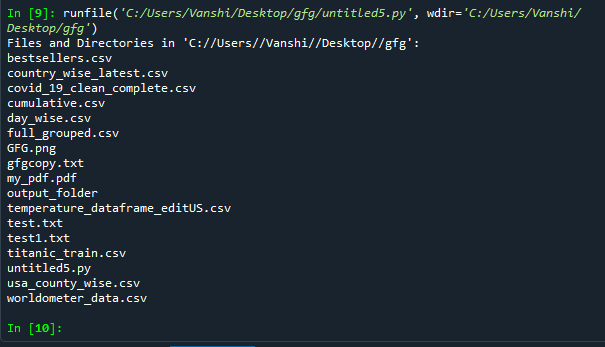
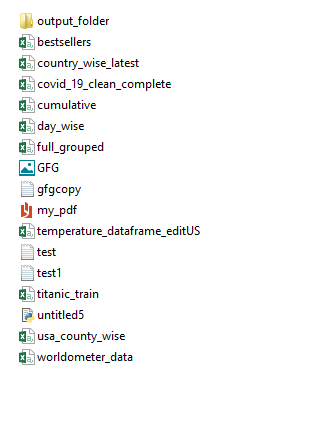
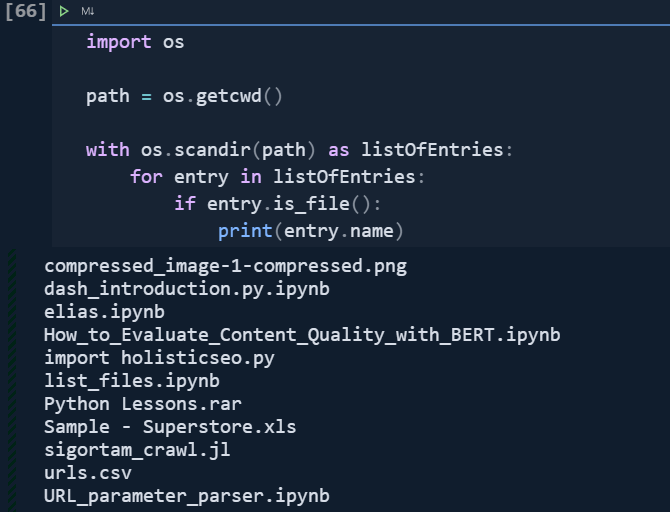




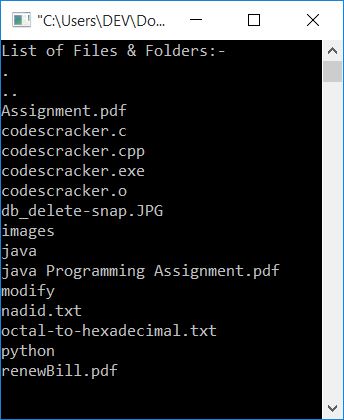






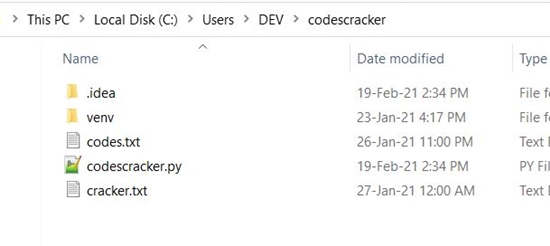










![File Handling in Python [Complete Series] – PYnative File Handling In Python [Complete Series] – Pynative](https://pynative.com/wp-content/uploads/2021/07/file_handling_in_python.png)

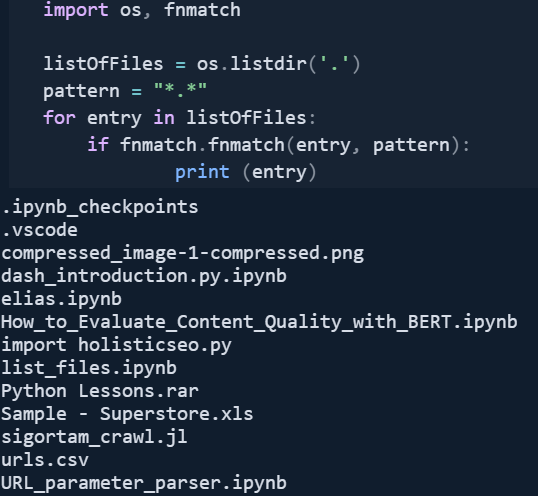
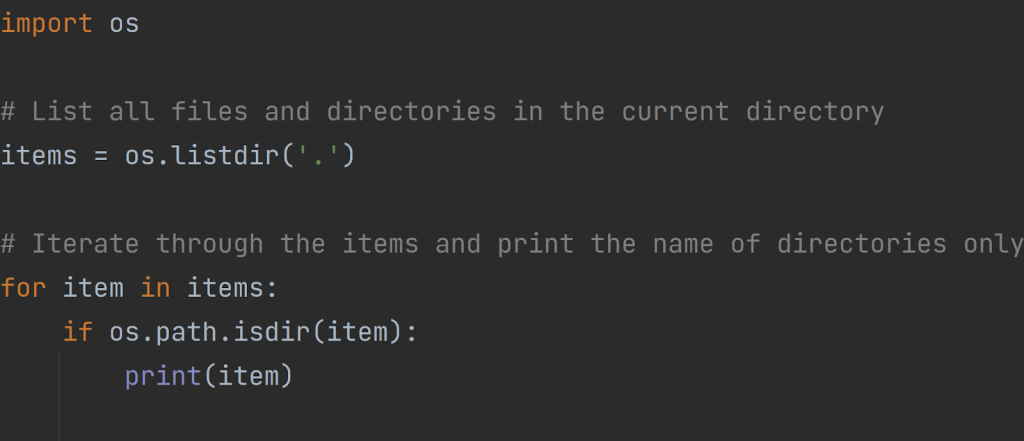
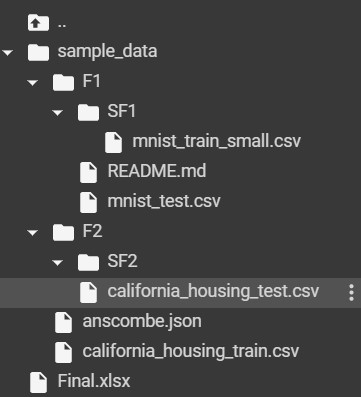





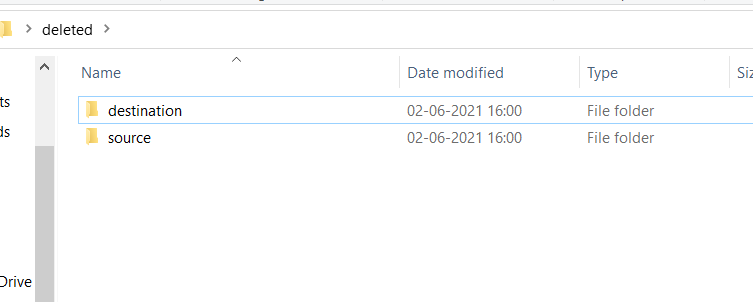

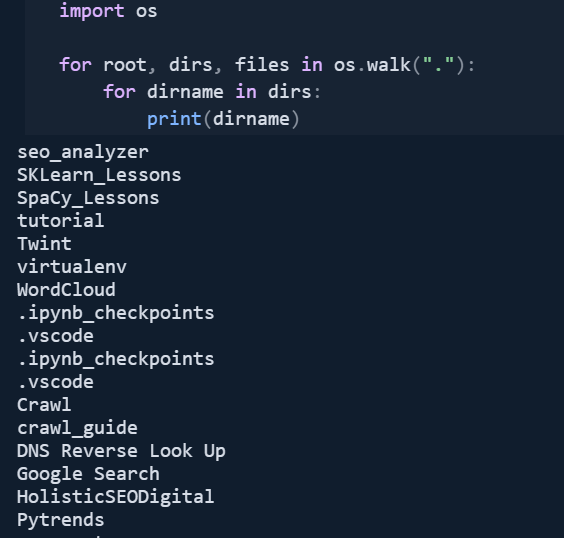

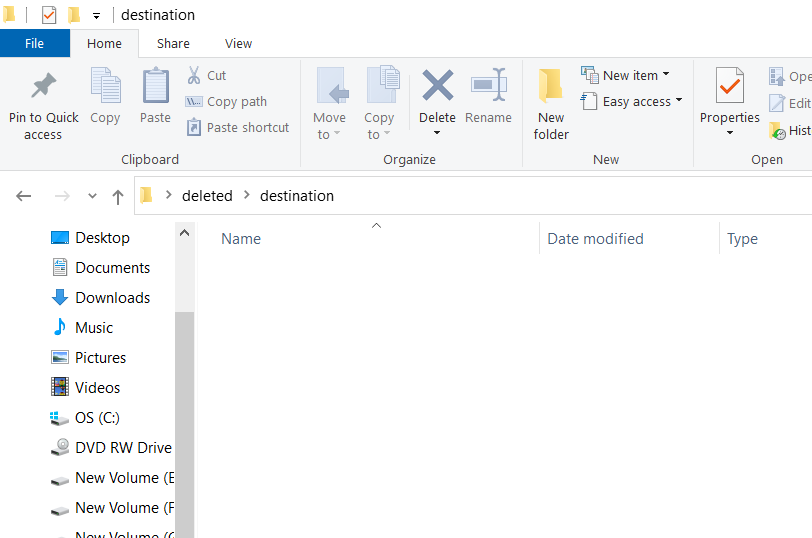










Article link: python list all files in directory.
Learn more about the topic python list all files in directory.
- How do I list all files of a directory? – python – Stack Overflow
- Python – List Files in a Directory – GeeksforGeeks
- Python List Files in a Directory [5 Ways] – PYnative
- Python List all Files in a Directory – Spark By {Examples}
- How to list files in a directory in Python – Educative.io
- Get a List of All Files in a Directory with Python (with code)
- Here is how to list all files of a directory in Python – PythonHow
- 3 Time-Saving Ways to Get All Files in a Directory using Python
See more: nhanvietluanvan.com/luat-hoc